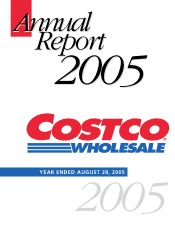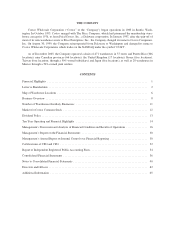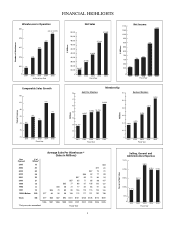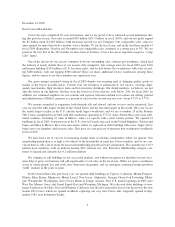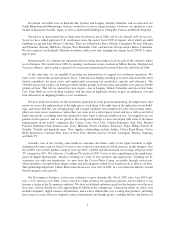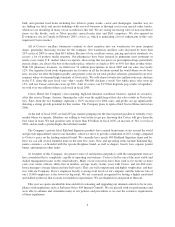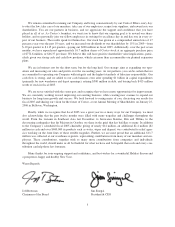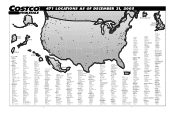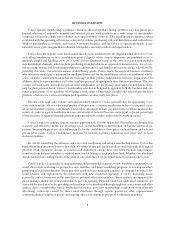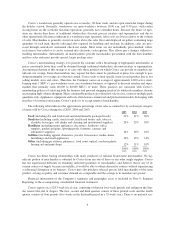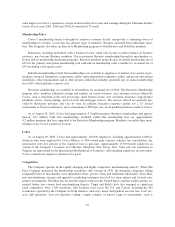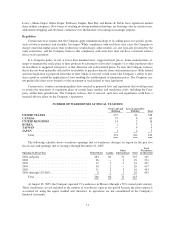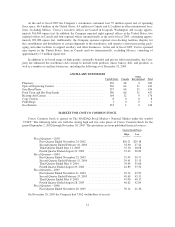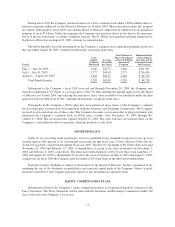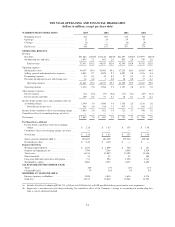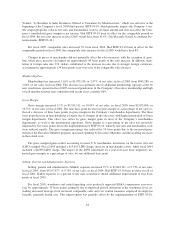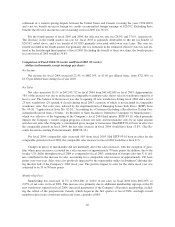Costco 2005 Annual Report Download - page 11
Download and view the complete annual report
Please find page 11 of the 2005 Costco annual report below. You can navigate through the pages in the report by either clicking on the pages listed below, or by using the keyword search tool below to find specific information within the annual report.sonal impact on Costco’s operations, except an increased level of sales and earnings during the Christmas holiday
season. Fiscal years 2005, 2004 and 2003 all consisted of 52 weeks.
Membership Policy
Costco’s membership format is designed to reinforce customer loyalty and provide a continuing source of
membership fee revenue. Costco has two primary types of members: Business and Gold Star (individual) mem-
bers. The Company also offers an Executive Membership program to both Business and Gold Star members.
Businesses, including individuals with a business license, retail sales license or other evidence of business
existence, may become Business members. Costco promotes Business membership through its merchandise se-
lection and its membership marketing programs. Business members generally pay an annual membership fee of
$45 for the primary and spouse membership card with add-on membership cards available for an annual fee of
$35 (including a free spouse card).
Individual memberships (Gold Star memberships) are available to employees of federal, state and local gov-
ernments, financial institutions, corporations, utility and transportation companies, public and private educational
institutions, other organizations and to other persons. Individual members generally pay an annual membership
fee of $45, which includes a spouse card.
Executive memberships are available to all members for an annual fee of $100. The Executive Membership
program offers members additional savings and benefits on various business and consumer services offered by
Costco, such as merchant credit card processing, small business loans, auto and home insurance, long-distance
telephone service, check printing, and real estate and mortgage services. The services offered are generally pro-
vided by third-party providers and vary by state. In addition, Executive members qualify for a 2% reward
(redeemable at Costco warehouses), up to a maximum of $500 per year, on all qualified purchases made at Costco.
As of August 28, 2005, Costco had approximately 5.0 million primary Business memberships and approx-
imately 16.2 million Gold Star memberships. Included within this membership base are approximately
4.2 million members that have upgraded to the Executive Membership program. Members can utilize their mem-
berships at any Costco warehouse location.
Labor
As of August 28, 2005, Costco had approximately 118,000 employees, including approximately 8,000 in-
dividuals who were employed by Costco Mexico (a 50%-owned joint venture), which is not consolidated. Ap-
proximately forty-five percent of the employee base is part-time. Approximately 13,500 hourly employees in
certain of the Company’s locations in California, Maryland, New Jersey, New York and one warehouse in
Virginia are represented by the International Brotherhood of Teamsters. All remaining employees are non-union.
Costco considers its employee relations to be good.
Competition
The Company operates in the rapidly changing and highly competitive merchandising industry. When The
Price Company pioneered the membership warehouse club concept in 1976, the dominant companies selling
comparable lines of merchandise were department stores, grocery stores and traditional wholesalers. Since then,
new merchandising concepts and aggressive marketing techniques have led to a more intense and focused com-
petitive environment. Wal-Mart has become the largest retailer in the United States (and the world) and has ex-
panded further into various food merchandising formats. Target and Kohl’s have also emerged as significant
retail competitors. Over 1,100 warehouse club locations exist across the U.S. and Canada, including the 403
warehouses operated by the Company in North America; and every major metropolitan area has one, if not sev-
eral, club operations. Low-cost operators selling a single category or narrow range of merchandise, such as
10

